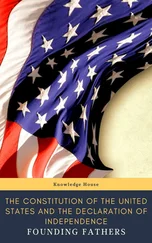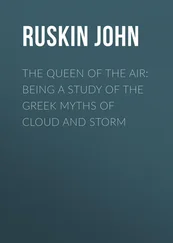George Dodd - The History of the Indian Revolt and of the Expeditions to Persia, China and Japan 1856-7-8
Здесь есть возможность читать онлайн «George Dodd - The History of the Indian Revolt and of the Expeditions to Persia, China and Japan 1856-7-8» — ознакомительный отрывок электронной книги совершенно бесплатно, а после прочтения отрывка купить полную версию. В некоторых случаях можно слушать аудио, скачать через торрент в формате fb2 и присутствует краткое содержание. Жанр: foreign_antique, foreign_prose, на английском языке. Описание произведения, (предисловие) а так же отзывы посетителей доступны на портале библиотеки ЛибКат.
- Название:The History of the Indian Revolt and of the Expeditions to Persia, China and Japan 1856-7-8
- Автор:
- Жанр:
- Год:неизвестен
- ISBN:нет данных
- Рейтинг книги:3 / 5. Голосов: 1
-
Избранное:Добавить в избранное
- Отзывы:
-
Ваша оценка:
- 60
- 1
- 2
- 3
- 4
- 5
The History of the Indian Revolt and of the Expeditions to Persia, China and Japan 1856-7-8: краткое содержание, описание и аннотация
Предлагаем к чтению аннотацию, описание, краткое содержание или предисловие (зависит от того, что написал сам автор книги «The History of the Indian Revolt and of the Expeditions to Persia, China and Japan 1856-7-8»). Если вы не нашли необходимую информацию о книге — напишите в комментариях, мы постараемся отыскать её.
The History of the Indian Revolt and of the Expeditions to Persia, China and Japan 1856-7-8 — читать онлайн ознакомительный отрывок
Ниже представлен текст книги, разбитый по страницам. Система сохранения места последней прочитанной страницы, позволяет с удобством читать онлайн бесплатно книгу «The History of the Indian Revolt and of the Expeditions to Persia, China and Japan 1856-7-8», без необходимости каждый раз заново искать на чём Вы остановились. Поставьте закладку, и сможете в любой момент перейти на страницу, на которой закончили чтение.
Интервал:
Закладка:
The next point to render clear is, the position of the man who so fatally influenced the affairs at Cawnpore in the summer months of 1857. Nena Sahib was his name to an English eye and tongue, and as Nena Sahib he will ever be execrated; but that was his titular or honorary, not his real name, which appears to have been Dhundu Punt or Dhoondhoopunt. When called the Nena or Náná, the Nena Sahib, the Peishwa, the Maharajah, the Nena Bahadoor, he was recognised by one of his oriental titles of honour. Let him to us be the Nena Sahib. There was a motive, however inadequate in the estimate of persons possessing a spark of human feeling, for the black treachery and monstrous cruelty of this man. He had a quarrel with the East India Company: a quarrel which the Company had nearly forgotten, but not he. The disagreement arose out of the prevalent Eastern custom of adoption, in default of legitimate male heirs. Bithoor, a town six or eight miles from Cawnpore, and within the same district, had long been the residence of the chief of the Mahrattas or Peishwa, with whom, as with other native princes, the Company had had many negotiations and treaties. Bithoor itself, a town of about fourteen thousand inhabitants, possesses numerous Hindoo temples, and several ghats or flights of steps giving access to the Ganges, to which the Brahmins and their followers frequently resort for the purpose of ritual ablution. The place is not without fortification, but it does not take rank among the strongholds of India. The last chief, Maharajah Bajee Rao Peishwa, died in 1851; and in consequence of that event, a jaghire or estate, near the town, which had been bestowed upon him during pleasure by the Company, lapsed to the government, and was subjected to the general regulations in force in Cawnpore. Being sonless, he had adopted a son, or indeed two sons – not merely to inherit the vast wealth which belonged to him independently of the arrangements with the Company, but also to perform certain filial duties which high-caste Hindoos deem it necessary to their religion that a son should perform. This adoption was legal so far as concerned the Peishwa’s personal property; but the Company would not admit its validity in relation to a pension of £50,000 per annum which he had been in the habit of receiving. A slight obscurity in the wording of an official document led to some doubt on this matter. On the 1st of June 1818, Sir John Malcolm, on the part of the Company, signed a treaty with Bajee Rao, granting a pension to the rajah and his family . This has since been interpreted, by the Bithoor intriguers, as a perpetual grant to the heirs ; but there is abundant evidence that Sir John and the Company meant the pension to be for Bajee Rao’s life only, to be shared by his family then living. Nine years afterwards, namely, in 1827, Bajee Rao adopted two children, Suddchoo Rao and Dhundu Punt, the one four years and the other two years and a half old; they were the sons of two Brahmins, natives of the Deccan, who had come to reside at Bithoor about a year before. There is no evidence that Bajee Rao ever considered these two adopted sons, or either of them, entitled to a continuance of the Company’s pension; although Dhundu Punt may very possibly have thrown out frequent hints, to sound the Company on this subject. It has been supposed that when the old King of Delhi was reproclaimed after the Meerut outbreak, he offered to acknowledge the Nena Sahib, Dhundu Punt, as the proper successor of the Peishwa of Bithoor, on condition of receiving his aid and allegiance. This was probably true, but would not suffice, without the incentive of private animosity, to account for his subsequent actions. So little was known of him in England when the Revolt began, that doubt prevailed whether he was really the adopted son of Bajee Rao; some writers asserting that that honour had been conferred upon another Dhundu Punt, and that the Nena himself was the eldest son of the rajah’s subadar, Ramchunder Punt.
If hatred ruled his heart during the six years from 1851 to 1857, he must indeed have been a consummate hypocrite; for the English were always courteously received by him at his petty court, and generally came away impressed in his favour – impressed, however, at the same time, with a conviction that he entertained a sort of hope that the Queen of England would graciously befriend him in his contest with the Calcutta government, the Court of Directors, and the Board of Control, all of whom disputed his adoptive claims. He had a curious taste for mingling the English with the oriental in his palace at Bithoor. An English traveller, who visited him a few years before the Revolt, and was received with an amount of flattery that appeared to have a good deal of shrewd calculation in it, found the rooms set apart for him decked with English furniture arranged in the most incongruous manner – a chest of drawers and a toilet-table in the sitting-room; a piano and a card-table in the bedroom; tent-tables and camp-stools in the same room with elegant drawing-room tables and chairs; a costly clock by the side of cheap japan candlesticks; good prints from Landseer’s pictures, in juxtaposition with sixpenny coloured plates of Wellington and Napoleon; sacred prints, and prints of ballet-girls and Epsom winners – all kinds were mingled indiscriminately, as if simply to make a show. The guest was most struck by the oriental compliments he received from the Nena, and by the odd attempt to provide English furniture where English habits and customs were so little known; yet there were not wanting dark tints to the picture. He heard rumours ‘that two women of rank were kept in a den not far from my apartments, and treated like wild beasts; and that a third, a beautiful young creature, had recently been bricked up in a wall , for no other fault than attempting to escape.’ An agent of the Nena, one Azimullah, resided some time in London, about the year 1855; he came to England to advocate the Nena’s claims, and managed to ingratiate himself with many persons moving in the upper circles of society, by his manifest abilities, his winning grace, his courtesy to all with whom he came into relation. Yet there were strange fits of moody silence observable in him; and when the failure of his mission became evident, he was heard to throw out dark mysterious threats, which were disregarded at the time, but were brought vividly to recollection afterwards, when the deeds of his master forced themselves into notice.
It will presently be seen that Nena Sahib, whatever were his thoughts at the time, did not depart, when the Revolt commenced, from his usual demeanour towards the English; he was courteous to them, and was always courteously saluted by them when he rode past.
How interesting it is – nay, how affecting – to trace the mode in which the unfortunate Europeans at Cawnpore became gradually shut out from communication with the external world; neither knowing what was occurring east and west of them, nor able to communicate news of their own sufferings! In May, messages and letters passed to and from them; in June, authentic intelligence was superseded by painful rumours; in July, a deadly silence was followed by a horrible revelation.
When the Meerut and Delhi outbreaks occurred, the attention of the civil and military authorities was turned to the importance of securing Cawnpore: because of its native troops, its store of ammunition, its large treasury, its considerable English population, and its position on the Ganges and the great road. Sir Henry Lawrence, knowing that Sir Hugh Wheeler’s force in European troops was weak, sent him fifty English infantry in the third week in May, and also sent the aid (aid as it was hoped to be) of two squadrons of Oude irregular horse. But Lucknow could ill spare these armed men, and hence the telegrams already briefly adverted to. First, Lawrence to Canning: ‘Cawnpore to be reinforced with all speed. When may her Majesty’s 84th be expected?’ Then Canning to Lawrence: ‘It is impossible to place a wing of Europeans at Cawnpore in less time than twenty-five days.’ Then Wheeler to Canning: ‘All is quiet here, but impossible to say how long it will continue so.’ Next a telegram from Benares, announcing that every possible exertion would be made to send on troops to Cawnpore as fast as they came from Calcutta. Then, on the 25th, Wheeler telegraphed to Canning: ‘Passed anxious night and day, in consequence of a report on very good authority that there would be an outbreak during one or the other. All possible preparations to meet it, but I rejoice to say that none occurred.’ On this, Lawrence sent his earnest message recommending the establishment of ekah dâks – anything at any expense – to carry troops on to Cawnpore. Towards the close of the month, about seventy men of the Queen’s 84th reached the city; and Sir Hugh telegraphed ‘All quiet:’ at the same time making very evident the existence of anxiety on his mind concerning his prospects. The governor-general telegraphed to him: ‘Your anxious position is well understood; and no means have been neglected to give you aid.’ On another day Sir Hugh telegraphed: ‘All quiet still, but I feel by no means certain it will continue so. The civil and military are depending entirely upon me for advice and assistance.’ He announced to Lawrence that he had been obliged to send irregular cavalry to clear the roads of insurgent ruffians; and added, ‘Europeans are arriving but very slowly here.’ The dilemma and doubt were painful to all; for Viscount Canning had few troops to send up from Calcutta, and no facilities for sending them rapidly; while, on the other hand, he did not know that death had cut off General Anson ere an advance could be made to Delhi and Cawnpore from the northwest. Hence such telegrams as the following from Canning to Anson: ‘Cawnpore and Lucknow are severely pressed, and the country between Delhi and Cawnpore is passing into the hands of the rebels. It is of the utmost importance to prevent this, and to relieve Cawnpore; but nothing but rapid action will do this… It is impossible to overrate the importance of shewing European troops between Delhi and Cawnpore.’ Sir Hugh Wheeler’s anxieties did not relate wholly to Cawnpore; he knew that a wide region depended on that city for its continuance in loyalty. By the 2d of June only ninety European troops had reached him. On the next day he telegraphed that the population was much excited, and that unfavourable reports were coming in from the districts between Cawnpore and Lucknow. To make matters worse, Lawrence was becoming weak at the last-named place, and Wheeler sent him fifty-two of his highly cherished English troops – a number that shews how precious, from its scarcity, this military element was regarded by the two commanders. ‘This leaves me weak,’ said Wheeler; and well might he say so. Then occurred the cutting of the telegraph wires on all sides of Cawnpore, and the stoppage of the dâk-runners. After this, all was doubt and mystery, for it was only by stealthy means that letters and messages could leave or enter that city. By degrees there reached the Company’s officers at Lucknow, Allahabad, and Benares, indirect news telling of disaster – of a rebellious rising of the native troops at Cawnpore; of the mutineers being aided and abetted by the Nena Sahib of Bithoor; of all the Europeans taking refuge in an intrenched barrack; of the forlorn band being regularly besieged in that spot; of terrible sufferings being endured; and of the soldiers and civilians, the women and children, being brought to death by numerous privations. The commissioner at Benares, when these rumours of disaster reached him, telegraphed to Calcutta: ‘May God Almighty defend Cawnpore; for no help can we afford.’ And so it was throughout June – Benares, Allahabad, Lucknow, Agra, all were equally unable to send aid to the beleaguered garrison. Gradually the messages became fewer, and the rumours darker; escaped fugitives and native messengers came in stealthily to one or other of the neighbouring towns; and men talked of a massacre at Cawnpore of English fugitives from Futtehgur, of another massacre of English in boats bound for Calcutta, of women and children placed in confinement, and of Nena Sahib’s cruelty.
Читать дальшеИнтервал:
Закладка:
Похожие книги на «The History of the Indian Revolt and of the Expeditions to Persia, China and Japan 1856-7-8»
Представляем Вашему вниманию похожие книги на «The History of the Indian Revolt and of the Expeditions to Persia, China and Japan 1856-7-8» списком для выбора. Мы отобрали схожую по названию и смыслу литературу в надежде предоставить читателям больше вариантов отыскать новые, интересные, ещё непрочитанные произведения.
Обсуждение, отзывы о книге «The History of the Indian Revolt and of the Expeditions to Persia, China and Japan 1856-7-8» и просто собственные мнения читателей. Оставьте ваши комментарии, напишите, что Вы думаете о произведении, его смысле или главных героях. Укажите что конкретно понравилось, а что нет, и почему Вы так считаете.












